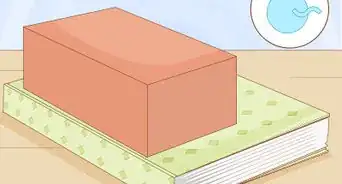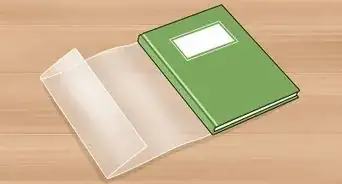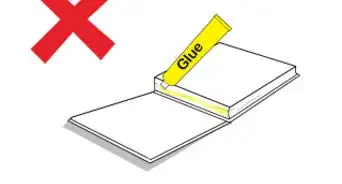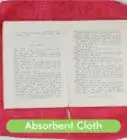This article was co-authored by wikiHow Staff. Our trained team of editors and researchers validate articles for accuracy and comprehensiveness. wikiHow's Content Management Team carefully monitors the work from our editorial staff to ensure that each article is backed by trusted research and meets our high quality standards.
The wikiHow Video Team also followed the article's instructions and verified that they work.
This article has been viewed 217,698 times.
Learn more...
Old books are a charming link to the past, but quite a fragile one. Dust, mild stains, and pencil marks are fairly easy to remove. More serious damage from insects, acid, or damp is difficult but not impossible to repair. If you're treating an antique, you may want to place it in the hands of a professional.
Steps
Community Q&A
-
QuestionHow can I remove dust from my book's pages?
 Community AnswerUse a very soft paint brush, preferably with natural bristles. Gently sweep the dust off the pages.
Community AnswerUse a very soft paint brush, preferably with natural bristles. Gently sweep the dust off the pages. -
QuestionHow do I clean the page edges of a closed old book?
 Community AnswerYou might try using very fine sandpaper. Close the book and set on a hard surface. Using very light stroke, move the fine sandpaper vertically down the outside. If this produces good results, do the tops and bottom in the same fashion, but move the sandpaper horizontally.
Community AnswerYou might try using very fine sandpaper. Close the book and set on a hard surface. Using very light stroke, move the fine sandpaper vertically down the outside. If this produces good results, do the tops and bottom in the same fashion, but move the sandpaper horizontally. -
QuestionMy collection of children's stories has a white dust like mold on the hardcovers. It does not smell moldy. How can I clean these?
 Community AnswerUse a soft, natural bristle brush to remove the white dust. Do not reshelve them immediately. Pay close attention to see if the dust returns.
Community AnswerUse a soft, natural bristle brush to remove the white dust. Do not reshelve them immediately. Pay close attention to see if the dust returns.
Warnings
- Never use water to clean paper, or any non-waterproof cover. This may cause further staining and warping, and leave the book vulnerable to mold.[6]⧼thumbs_response⧽
Things You'll Need
- Soft, clean toothbrush or paint brush
- Art gum eraser
- Absorene book cleaner
- Microfiber cloth
- Baby oil (for adhesive)
References
- ↑ https://www.nedcc.org/free-resources/ask-nedcc/faqs
- ↑ https://cleaning.tips.net/T007374_Cleaning_Old_Books.html
- ↑ https://www.dummies.com/home-garden/home-improvement/cleaning-stain-removal/how-to-clean-books/
- ↑ https://www.nls.uk/collections/rare-books/beginners/caring-for-rare-books
- ↑ https://www.nls.uk/collections/rare-books/beginners/caring-for-rare-books
- ↑ http://www.vam.ac.uk/content/articles/c/caring-for-your-books-and-papers/
About This Article
To clean an old book, remove stubborn dust by brushing it off with a dry paint brush or a soft toothbrush. If there are smudges or pencil marks in the book, get a gum eraser from an art supply store and erase the marks with it, working in one direction to avoid crinkling or ripping the pages. Additionally, to lift sticky residue off the cover of a book, dab a little baby oil or cooking oil on a piece of cotton wool and rub it over the affected area. Once the residue is gone, wipe the area clean with a fresh piece of cotton wool. To learn how to clean leather bound volumes, keep reading!




























































